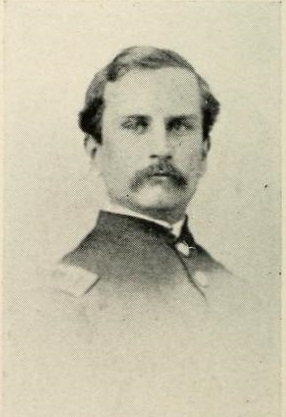
The Congressional Medal of Honor has been awarded to one, and only one, Yonkers resident, Colonel William Laing Heermance.
Born in Kinderhook, New York, on February 23, 1837, William Heermance moved to Long Island as a youth, where he lived while employed in a New York City mercantile concern.
Shortly after the beginning of the Civil War, and at his own expense, he raised a company of volunteers to fight in defense of the Union. Not thinking himself competent, though, to lead his company into battle, he enlisted instead as a private in the 9th New York Militia, a unit which was mustered into service with the Union army as the 83rd New York Volunteers.
As it happened, though, Heermance saw most of his three years’ service in the Civil War with the 6th New York Cavalry. He took part in every major battle in which the Army of the Potomac found itself engaged, including the defense of Cemetery Ridge at Gettysburg. He was wounded three times and was held briefly as a prisoner of war in Libby Prison in Richmond. Commissioned a First Lieutenant and later a Captain in 1861, he held the rank of Lieutenant Colonel at the time of his discharge (he was invalided out) in November 1864.
William Heermance’s encounter with the enemy on April 30, 1863, when he was left for dead on the field and then taken prisoner, is perhaps the most dramatic of all the incidents that befell him during his time in uniform.
It was at Spotsylvania in Virginia on that day that the 6th New York Cavalry found itself surrounded by Confederate cavalry. The order was given to the men to cut their way out. Heermance drew his sword and brought it down upon Captain Benjamin F. Medina of the 5th Virginia Cavalry, almost cutting off Medina’s nose. A moment later Heermance was shot by another soldier and fell from his horse.
After the war, William Heermance took up residence in Yonkers, where he lived for the rest of his life. In 1881 and 1882 he served as police commissioner. In 1895 he was president of the Yonkers Historical and Library Association. He was also first vice-president of the New York Mercantile Exchange and active in the Holland Society. (The Heermance family was one of the oldest Dutch families in New York State.)
William Heermance died at his Yonkers home on February 25, 1903. His funeral took place on February 28 in the First Presbyterian Church on North Broadway, where he’d been a congregant for many years. After the funeral his body was conveyed to Oakland Cemetery for burial. Members of the Kitching Post of the Grand Army of the Republic fired a volley of three shots over Col. Heermance’s last resting place.
Present at the funeral, as reported by the Yonkers Statesman, was a man, by this time a Yonkers resident, with whom William Heermance had become friendly after the war: “Benjamin F. Medina, formerly of the Confederate Army—who engaged in an impromptu duel with Colonel Heermance with cavalry swords at Spotsylvania, in which both were wounded and in which the Colonel was taken prisoner—was among those present at the funeral.”